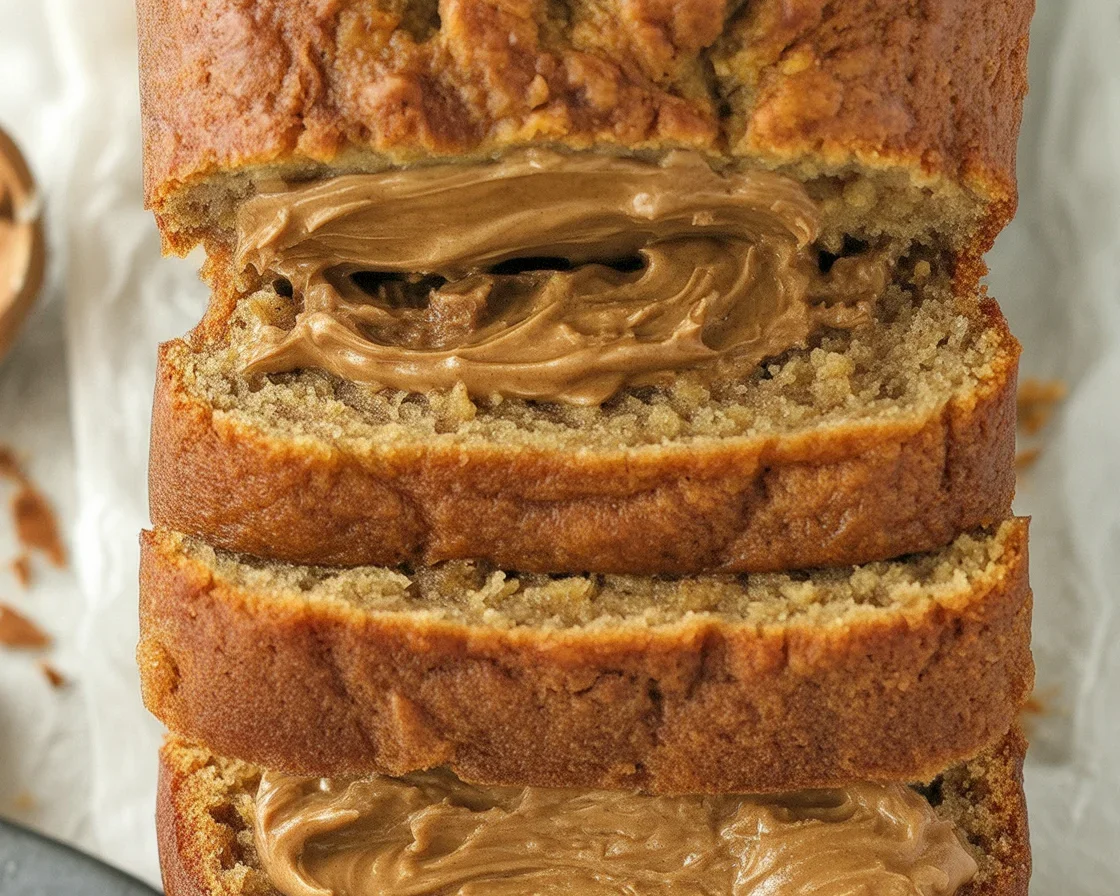There’s something universally comforting about the aroma of banana bread wafting from the kitchen — that perfect blend of ripe bananas, warm spices, and sweet satisfaction. But when you’re baking gluten-free, the sweetener you choose becomes more than just a flavor enhancer; it’s a crucial component that can make or break your loaf’s texture, moisture, and overall success.
The world of natural sweeteners offers exciting alternatives to refined white sugar, each bringing unique characteristics to your gluten-free banana bread. Through extensive testing with various gluten-free flour blends and sweetener combinations, we’ve discovered that the right choice can elevate your banana bread from good to extraordinary. This comprehensive guide will walk you through the best natural sweeteners for gluten-free banana bread, helping you understand how each affects taste, texture, and nutritional value.
Why Sweetener Choice Matters in Gluten-Free Baking
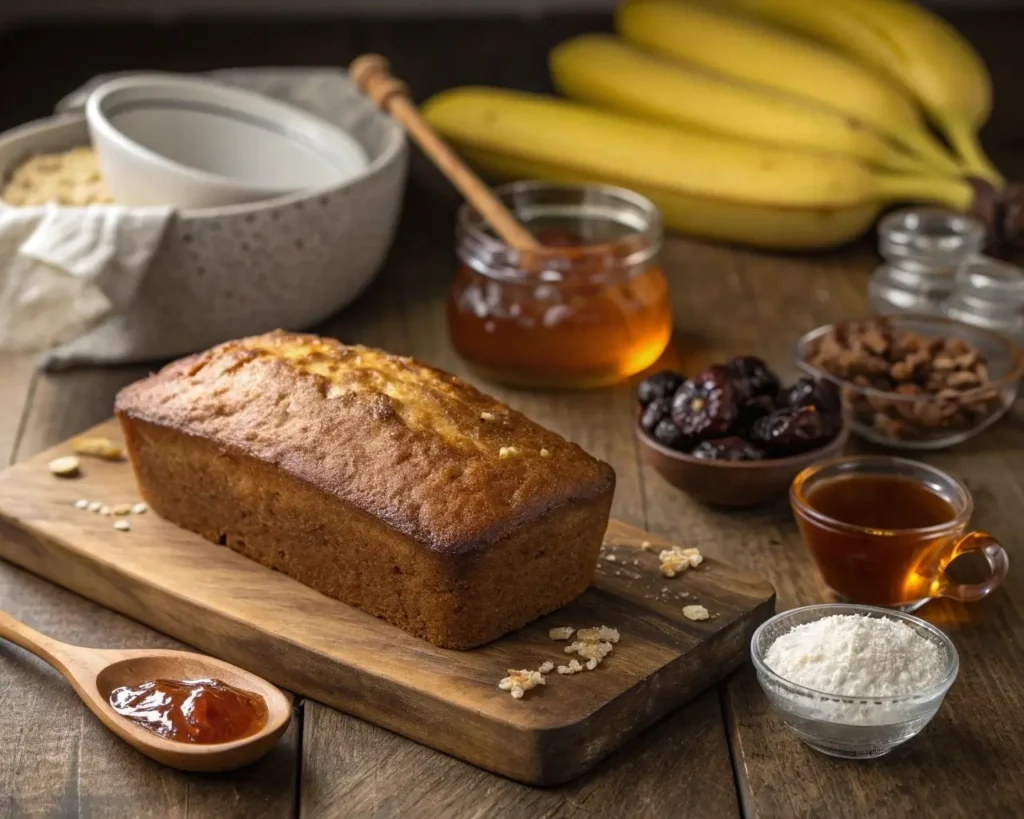
In traditional wheat-based baking, gluten provides structure and helps retain moisture. Without it, gluten-free bakers must rely more heavily on other ingredients to achieve the desired texture and shelf life. Sweeteners play a surprisingly complex role in this equation.
Sugar doesn’t just add sweetness — it contributes to moisture retention, browning, and structural stability. In gluten-free banana bread, the right sweetener can help create that tender crumb we all crave while preventing the dreaded dry, crumbly texture that plagues many gluten-free baked goods.
The natural fruit sugars in bananas provide some sweetness, but they also contribute moisture and help bind ingredients together. When selecting additional sweeteners, you want options that complement rather than compete with the banana’s natural flavor profile. Some sweeteners can overpower the delicate banana taste, while others enhance it beautifully.
From a health perspective, natural sweeteners often provide additional nutrients, antioxidants, and a lower glycemic impact compared to refined sugar. According to nutrition experts at Harvard’s School of Public Health, choosing less processed sweeteners can contribute to better blood sugar stability and provide trace minerals often stripped from refined alternatives.
Overview of Natural Sweeteners for Gluten-Free Banana Bread
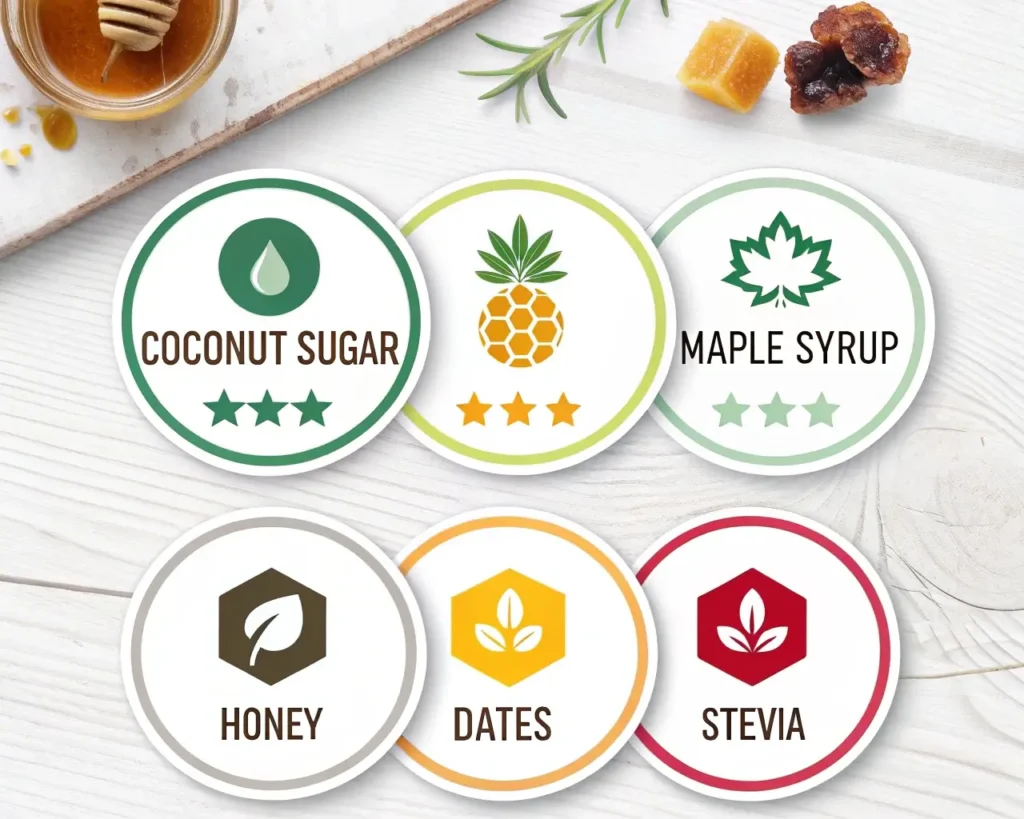
Natural sweeteners are minimally processed alternatives to refined white sugar, derived from plants, fruits, or other natural sources. They retain more of their original nutrients and often provide complex flavors that can enhance your banana bread’s taste profile.
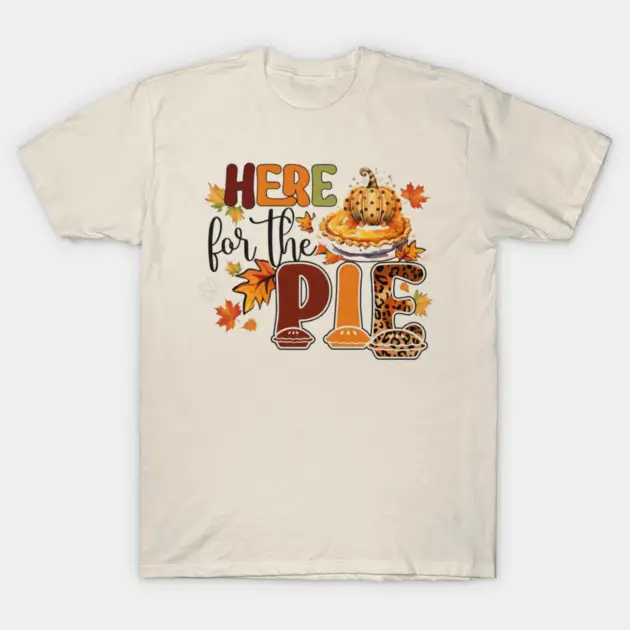
Here’s a quick comparison of the most popular natural sweeteners for gluten-free banana bread:
| Sweetener | Glycemic Index | Flavor Profile | Moisture Contribution | Sweetness Level |
|---|---|---|---|---|
| Coconut Sugar | 35 | Caramel, nutty | Medium | Similar to white sugar |
| Maple Syrup | 54 | Rich, complex | High | 1.3x sweeter than sugar |
| Honey | 50-58 | Floral, varies by type | High | 1.2-1.5x sweeter than sugar |
| Date Sugar | 55 | Deep, fruity | Low | Similar to brown sugar |
| Agave Nectar | 15-30 | Mild, neutral | High | 1.4x sweeter than sugar |
| Stevia Blends | 0 | Can be bitter | None | 200-300x sweeter than sugar |
Coconut Sugar: The Caramel Connection
Coconut sugar has become a favorite among health-conscious bakers, and for good reason. Made from the sap of coconut palm flower buds, it offers a rich, caramel-like flavor with subtle nutty undertones that pair beautifully with bananas.
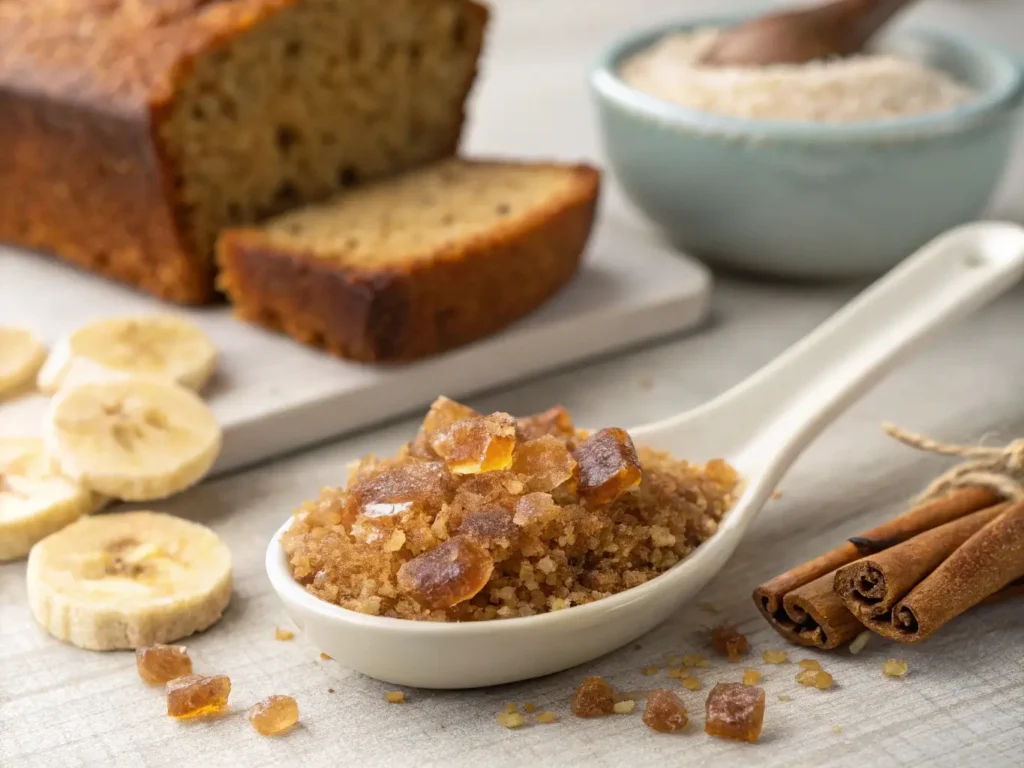
In gluten-free banana bread, coconut sugar provides excellent moisture retention without making the batter too wet. Its granulated texture makes it an easy 1:1 substitute for white sugar in most recipes, requiring minimal adjustments to your favorite gluten-free banana bread recipe.
The mineral content in coconut sugar — including potassium, zinc, and iron — adds nutritional value while contributing to the complex flavor profile. Research published in the Journal of Nutritional Science indicates that coconut sugar retains more nutrients than refined sugar due to its minimal processing.
For best results, use coconut sugar in recipes that already include warm spices like cinnamon or nutmeg. The caramel notes complement these flavors while allowing the banana to remain the star. Try our coconut sugar gluten-free banana bread recipe for a perfectly balanced loaf that showcases this sweetener’s potential.
Maple Syrup: Liquid Gold for Depth of Flavor
Pure maple syrup brings unparalleled richness to gluten-free banana bread. Its complex flavor profile — ranging from delicate and buttery to robust and molasses-like, depending on the grade — adds sophisticated depth that elevates the entire loaf.
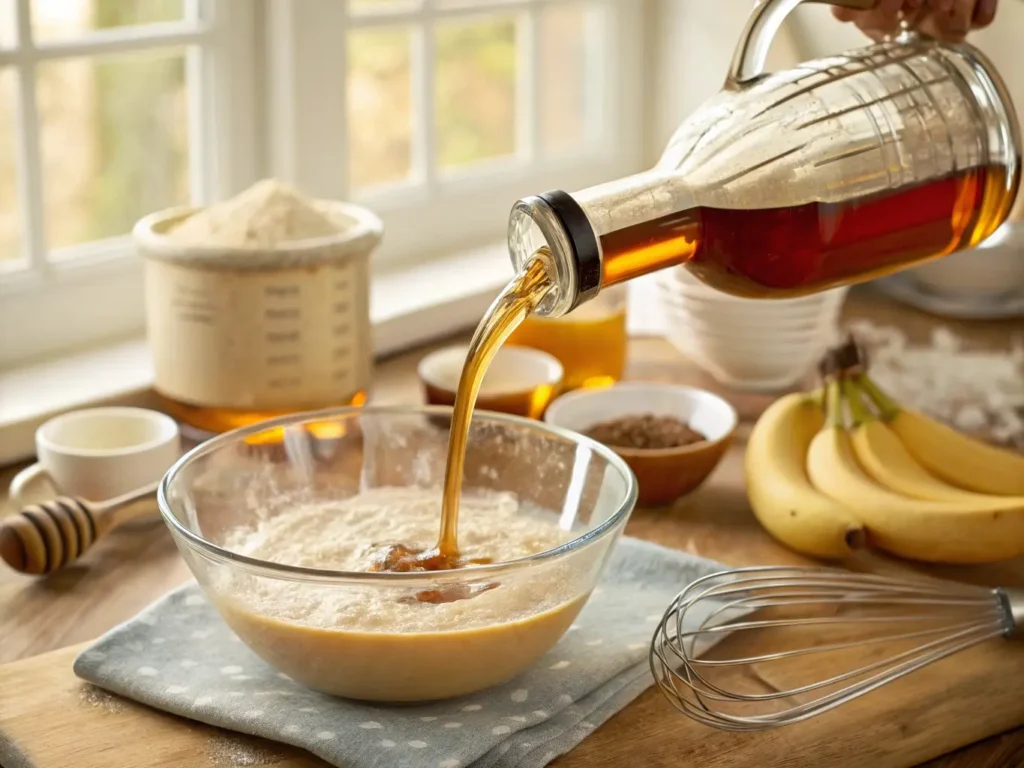
When using maple syrup, you’ll need to adjust the liquid content in your recipe. For every cup of granulated sugar replaced, reduce other liquids by about 3 tablespoons. This liquid sweetener also promotes beautiful browning, giving your banana bread an appealing golden crust.
The natural enzymes and minerals in maple syrup, including manganese and zinc, provide additional nutritional benefits. According to the International Maple Syrup Institute’s research, pure maple syrup contains over 50 beneficial compounds, including antioxidants that may help reduce inflammation.
Maple syrup pairs exceptionally well with certain gluten-free flour blends, particularly those containing almond or oat flour. The nutty undertones in these flours complement maple’s richness while maintaining the banana bread’s characteristic tender crumb.
Honey: Nature’s Golden Sweetener
Honey offers natural sweetness with subtle floral undertones that can range from mild clover to bold wildflower, depending on the variety you choose. This versatility allows you to customize your banana bread’s flavor profile based on your preferred honey type.
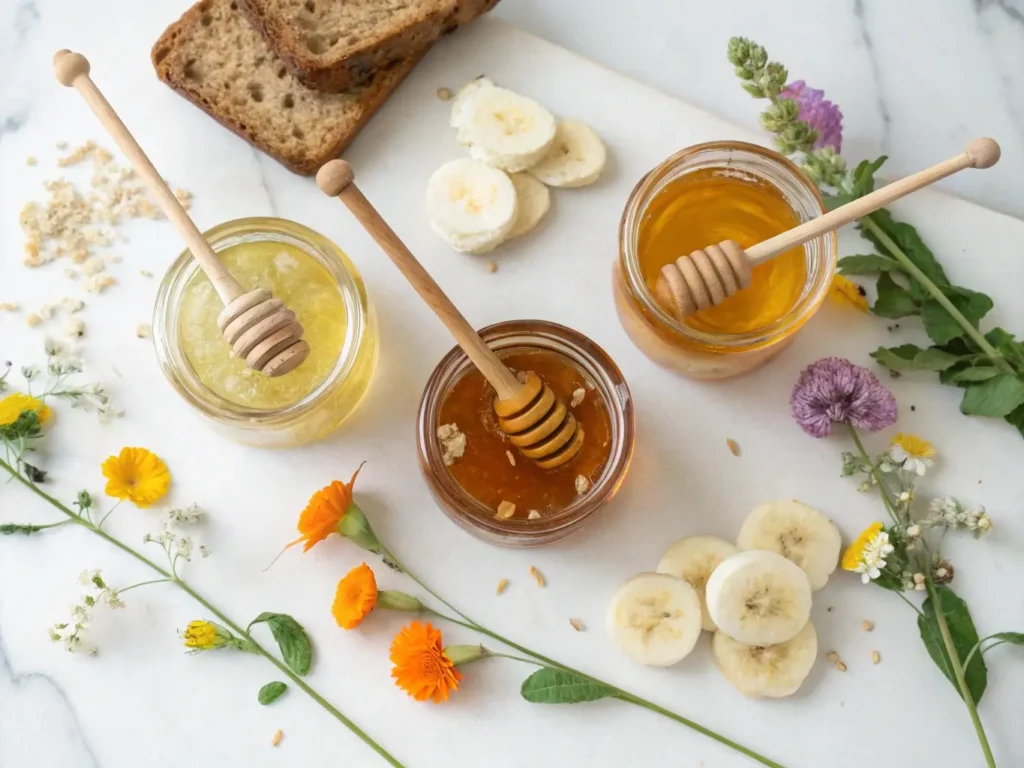
In gluten-free baking, honey contributes significant moisture while promoting excellent browning. The natural enzymes in honey can also help extend your banana bread’s shelf life — an important consideration for gluten-free baked goods, which tend to stale more quickly than their wheat-based counterparts.
When substituting honey for granulated sugar, use about ¾ cup honey for each cup of sugar and reduce other liquids by 2-3 tablespoons. You may also want to lower your baking temperature by 25°F to prevent over-browning.
The National Honey Board reports that honey contains trace amounts of vitamins, minerals, and antioxidants that refined sugar lacks. Choose raw, unprocessed honey when possible to maximize these nutritional benefits.
For optimal results, pair honey with complementary flavors like vanilla or cinnamon. Avoid strongly flavored honeys that might compete with the banana’s delicate taste.
Date Sugar and Date Paste: Fiber-Rich Sweetness
Date sugar, made from ground dehydrated dates, offers impressive nutrient density along with natural sweetness. Unlike other granulated sweeteners, date sugar retains all the fiber, potassium, and antioxidants found in whole dates.
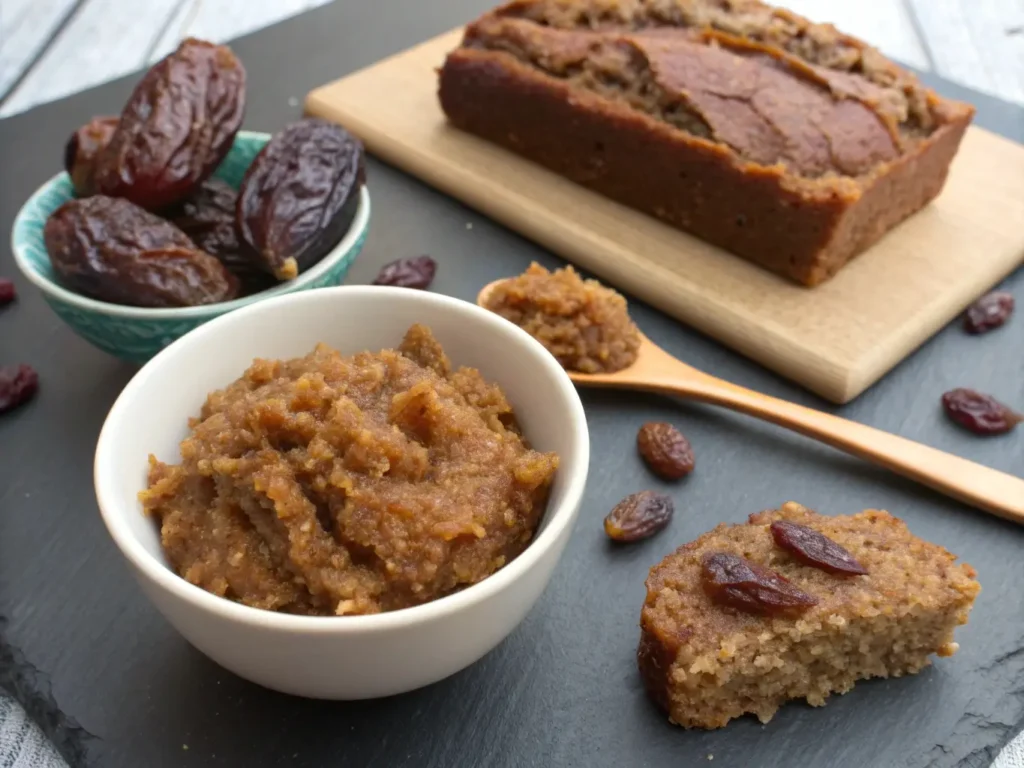
The coarse texture of date sugar doesn’t dissolve completely during baking, which can create interesting textural contrast in your banana bread. Some bakers prefer this slightly rustic quality, while others find it distracting. For a smoother result, try soaking date sugar in warm water for 10-15 minutes before incorporating it into your batter.
Date paste, made by blending dates with water, provides similar nutritional benefits with better integration into batters. It adds moisture and binding properties that work particularly well in gluten-free recipes.
Studies in the Journal of Nutritional Science show that dates are rich in antioxidants, particularly flavonoids and carotenoids, which may provide anti-inflammatory benefits. The fiber content also helps slow sugar absorption, leading to more stable blood sugar levels.
Use date sugar or paste in recipes where you want pronounced fruit flavors. The natural sweetness pairs beautifully with nuts, chocolate chips, or warm spices.
Agave Nectar: Mild and Versatile
Agave nectar’s neutral flavor profile makes it an excellent choice when you want sweetness without competing flavors. Its high fructose content means it’s significantly sweeter than sugar, so you’ll use less — typically about ¾ cup agave for each cup of sugar.
The liquid nature of agave nectar contributes substantial moisture to gluten-free banana bread, helping achieve that coveted tender crumb. However, its high fructose content also means faster browning, so you may need to reduce baking temperature or cover your loaf with foil partway through baking.
While agave nectar has a lower glycemic index than many sweeteners, Mayo Clinic nutrition experts note that its high fructose content may still impact blood sugar and should be used in moderation, particularly for individuals managing diabetes.
Agave works well in recipes where you want the banana flavor to shine without interference from the sweetener. It’s particularly effective in lighter, more delicate banana bread variations.
Stevia and Monk Fruit Blends: Zero-Calorie Options
For those following low-sugar or ketogenic diets, stevia and monk fruit blends offer sweetness without calories or blood sugar impact. However, these intense sweeteners require careful handling to achieve good results in gluten-free banana bread.
Pure stevia can have a bitter aftertaste, especially when used in larger quantities. Look for blends that combine stevia or monk fruit with erythritol or other sugar alcohols for better flavor and bulk. These blends often work better in baking applications than pure extracts.
Since these sweeteners don’t provide the bulk, moisture, or browning properties of traditional sweeteners, you’ll need to compensate with additional ingredients. Consider adding unsweetened applesauce, Greek yogurt, or extra mashed banana to maintain moisture and structure.
The FDA recognizes both stevia and monk fruit as Generally Recognized as Safe (GRAS), making them suitable options for most people. However, some individuals may experience digestive sensitivity to the sugar alcohols often included in commercial blends.
Start with small batches when experimenting with these sweeteners, as the learning curve can be steep. Many bakers find success combining small amounts of stevia or monk fruit with traditional sweeteners to reduce overall sugar content while maintaining good texture.
Best Sweetener Combinations for Banana Bread
Some of the most successful gluten-free banana breads use combinations of sweeteners to achieve optimal flavor, texture, and nutritional balance. Here are proven combinations that deliver exceptional results:
Coconut Sugar + Maple Syrup: Combine ½ cup coconut sugar with ¼ cup maple syrup for complex caramel notes with rich depth. Reduce other liquids by 2 tablespoons to compensate for the maple syrup’s moisture content.
Honey + Date Paste: Mix ⅓ cup honey with ¼ cup date paste for natural sweetness with added fiber and minerals. This combination provides excellent moisture retention and subtle fruit flavors that complement bananas beautifully.
Agave + Coconut Sugar: Use ⅓ cup agave nectar with ⅓ cup coconut sugar for balanced sweetness without overpowering flavors. This combination offers good moisture while maintaining familiar granulated sugar properties.
Maple Syrup + Stevia: For reduced sugar content, try ¼ cup maple syrup with ½ teaspoon stevia blend. The maple syrup provides flavor complexity and moisture while stevia adds sweetness without calories.
These combinations work particularly well when you’re adapting existing recipes or creating your own variations. The key is balancing liquid and dry sweeteners while considering how each affects flavor and texture.
Tips for Switching Sweeteners in Gluten-Free Banana Bread
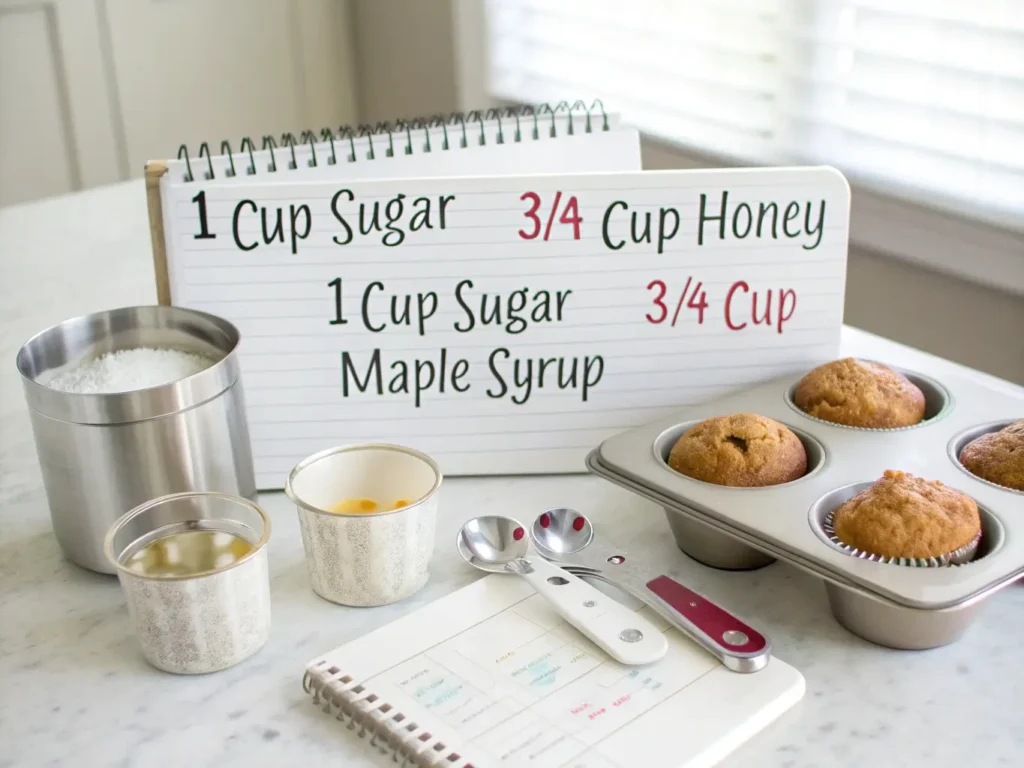
Successfully substituting sweeteners in gluten-free banana bread requires understanding how different sweeteners affect moisture, structure, and baking behavior. Here are essential tips for smooth transitions:
Moisture Adjustments: Liquid sweeteners like honey, maple syrup, and agave add moisture to your batter. For every cup of granulated sugar replaced with liquid sweetener, reduce other liquids by 2-4 tablespoons. Start conservative and adjust in subsequent batches.
Temperature Modifications: Natural sweeteners often brown faster than white sugar. Reduce oven temperature by 25°F when using honey, maple syrup, or agave to prevent over-browning while ensuring proper internal cooking.
Timing Considerations: Dense sweeteners like date sugar may require slightly longer baking times to fully integrate. Check doneness with a toothpick, looking for moist crumbs rather than wet batter.
Small Batch Testing: Before committing to a full-sized loaf, test new sweetener combinations in muffin form. This allows you to adjust ratios and timing without wasting ingredients on unsuccessful experiments.
Storage Adaptations: Different sweeteners affect shelf life. Honey and maple syrup can extend freshness, while some sugar alcohols may cause faster staling. Adjust your storing gluten-free bread methods accordingly.
When working with unfamiliar sweeteners, keep detailed notes about ratios, baking times, and results. This documentation becomes invaluable for perfecting your personal recipes.
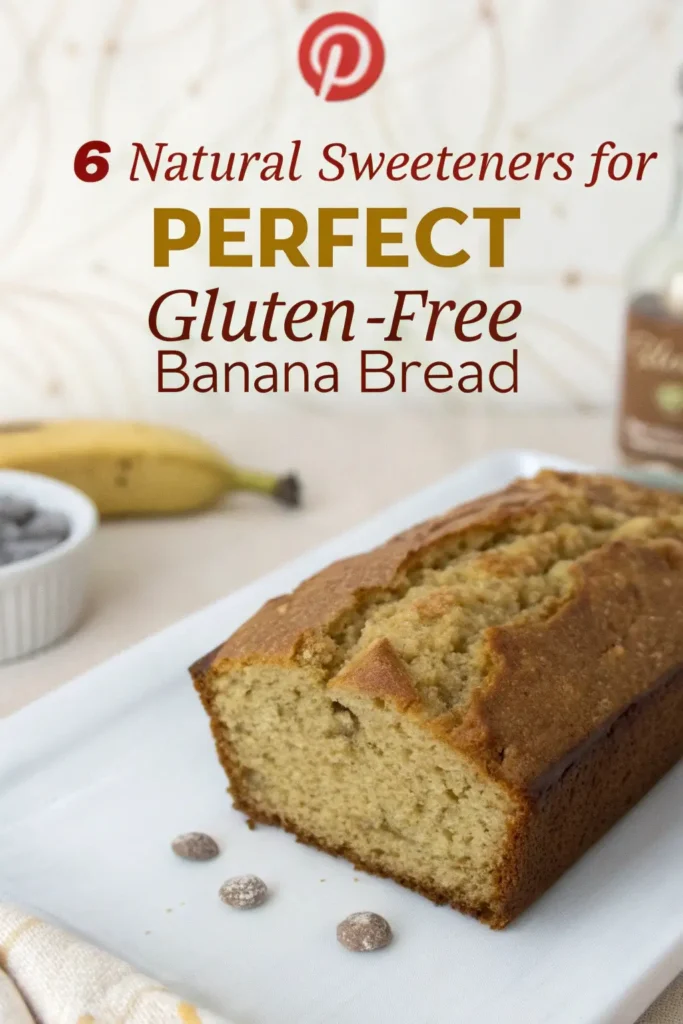
Conclusion
Choosing the right natural sweetener for your gluten-free banana bread opens up a world of flavor possibilities while providing potential health benefits over refined sugar. Coconut sugar offers caramel complexity with easy substitution, while maple syrup brings sophisticated depth. Honey provides floral notes and moisture retention, and date-based sweeteners add fiber and nutrients.
For most home bakers, coconut sugar serves as an excellent starting point — its familiar granulated texture and 1:1 substitution ratio make it forgiving for beginners. As you gain confidence, experiment with liquid sweeteners like maple syrup or honey for more complex flavors, or try sweetener combinations for customized results.
Remember that the best sweetener choice depends on your personal taste preferences, health goals, and desired texture. Some prefer the pronounced caramel notes of coconut sugar, while others favor the neutral sweetness of agave nectar that lets banana flavors shine.
Whether you’re new to gluten-free baking or looking to expand your repertoire, understanding how different sweeteners behave in gluten-free banana bread empowers you to create consistently delicious results. Start with our tested gluten-free banana bread recipe as your foundation, then experiment with these natural sweeteners to discover your perfect combination. For an even simpler approach, try our yeast-free gluten-free banana bread recipe that eliminates any rising agents while still delivering incredible flavor and texture.
For those ready to dive deeper into gluten-free baking, explore our guides on gluten-free flour blends and artisan bread machine techniques to expand your skills beyond banana bread. Happy baking!

